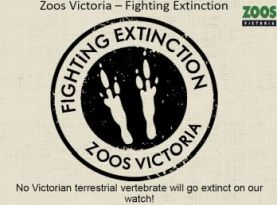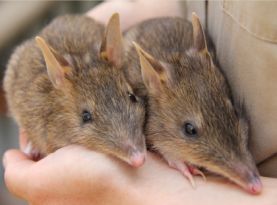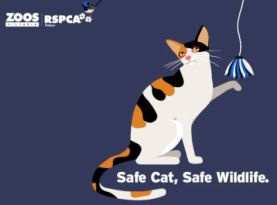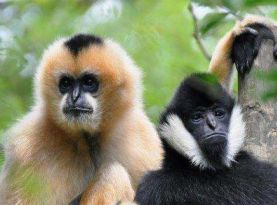SWIFFT Seminar notes 14 February 2019
Zoos Victoria - Fighting Extinction
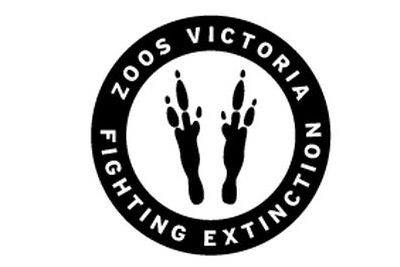
SWIFFT seminar notes are a summary of the seminar and not intended to be a definitive record of presentations made and issues discussed.
This SWIFFT seminar was conducted via Zoom and supported through resources and technology provided by the Department of Environment, Land, Water and Planning, Victoria. SWIFFT wishes to thank speakers for their time and delivery of presentations. Thanks to Craig Whiteford who chaired the session from Zoos Victoria.
Key points summary
Introduction to a Zoo based conservation organisation
- A new Wildlife Conservation Master Plan 2019 - 2024 is expected to be released in July 2019.
-
Fighting Extinction will be expanded from 21 species to 27 species with 8 species on a Watch List.
List of speakers and topics
- Introduction to a Zoo based conservation organisation, Craig Whiteford, General Manager, Threatened species
- Overview of Zoos Victoria threatened species research activities, Dr Michael Magrath, Senior Research Manager
- Eastern Barred bandicoot - a tale of 3 islands, Dr Amy Coetsee, Threatened Species Biologist, Zoos Victoria
- Research to help captive and wild animals, Dr Marissa Parrott, Reproductive Biologist - Zoos Victoria
- Strategies to restore Lowland Leadbeater’s Possum populations, Dr Dan Harley, Threatened Species Biologist - Zoos Victoria
- Baw Baw Frog recovery, Deon Gilbert, Threatened Species Biologist, Zoos Victoria
- Conservation Detection Dogs, Chris Harnett, Threatened Species Project Officer, Zoos Victoria
- Community Conservation, Pete Lancaster, Community Conservation Campaigner, Zoos Victoria
- Informed by social research, Emily McLeod, Senior Social Science Research Manager
- International Programs, Chris Banks, International Programs Manager, Zoos Victoria
SPEAKER SUMMARIES
Introduction to a Zoo based conservation organisation
Craig Whiteford, General Manager, Threatened species
Craig spoke about the overarching measure of success for Zoos Victoria being species in the wild and not in captivity with the long-term security of populations of species and communities in functional ecosystems and natural habitats.
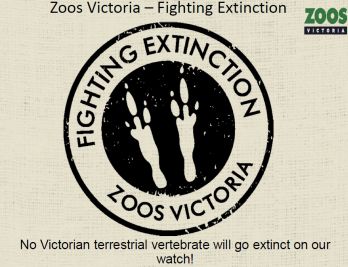
Craig explained the Zoos Conservation Model which has two main groups;
- Wildlife Conservation, comprising International conservation and Threatened species conservation.
- Community Conservation, helping people understand and have a deeper appreciation of what it means to be connected to wildlife and nature.
Wildlife Conservation Master Plan 2014 – 2019
Craig spoke about the demise of the Christmas Island pipistrelle, a bat which became extinct in 2009. The loss of this species acted as a catalyst for Zoos Victoria to prevent species loss into the future. The extinction of this species prompted Zoos Victoria to invest in its first Wildlife Conservation Master Plan 2014 – 2019. The plan was developed to look at threatened species in Victoria. The Fighting Extinction program targets investments to 21 species regarded as Critically Endangered and likely to become extinct in the next 10 years. There are also a number of species on a watch list which are included as part of the program.
Zoos Victoria - Fighting Extinction priority native threatened species
Trying new ways of doing things
Craig spoke about the need to look at new ways of achieving conservation results, particularly in cases where old methods have had limited success.
- Zoos Victoria Dog Squad
- International Conservation
- Innovative ways of promoting threatened species programs to the Victorian community
Community Conservation Master Plan 2015-2020
This plan includes Community Conservation and Social Programs
- Targeted Campaigns
- Education for Conservation
- Youth at the Zoo and Teacher Member
- Volunteers - Conservation Ambassadors
- Increasing the profile of Fighting Extinction program
Renewing Conservation Master Plans
Craig spoke about the development of a new Wildlife Conservation Master Plan 2019 - 2024, expected to be released in July 2019. This plan ensures better integration between the Social and Biological aspects.
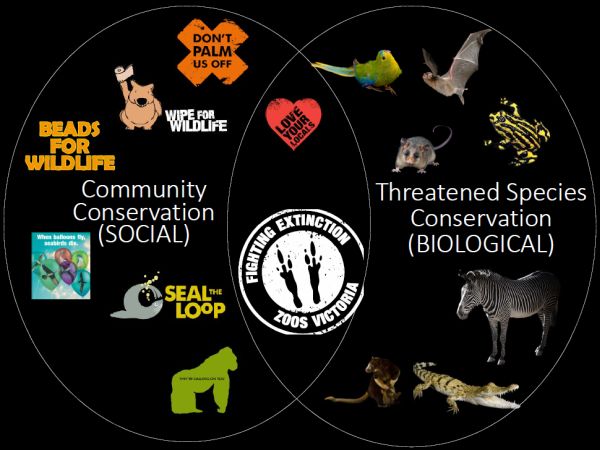
Key improvements from the old plan include:
- Expansion from 21 Fighting Extinction species to 27 priority native threatened species plus 8 species ona Watch List.
- Inclusion of Victorian Invertebrates for the first time.
- A new approach to the International Conservation program, encompassing guidance to other zoos through being a recognised leader in zoo-based conservation.
- Acknowledge Aboriginal culture science, changing climate, compassionate conservation and wildlife health & disease.
- Become advocates for new conservation technologies.
- Continue with campaigns and Grand gestures’ and other initiatives to mainstream the Fighting Extinction efforts.
- Embrace citizen science and support private land conservation involved in threatened species.
- Transition conservation planning process to ‘Open Standards’ which is a standard planning platform used by other conservation agencies.
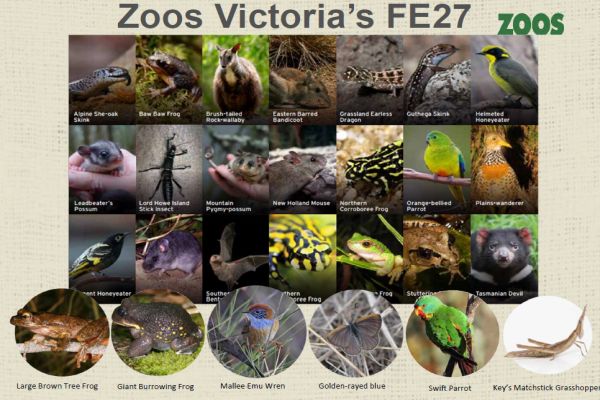
Partnerships
Craig spoke about importance of partnerships with over 130 partners listed in the Wildlife Conservation Master Plan.
Key points from questions
- Open Standards is based on work done by Nature Conservancy which provides a systematic standard for planning and implementation to streamline engagement with other conservation initiatives. See: Open Standards web site
- Support to private land conservation will be undertaken through partnerships with groups such as Trust for Nature. There is also scope to work in with schools and programs such as Land for Wildlife.
Overview of Zoos Victoria threatened species research activities
Dr Michael Magrath, Senior Research Manager
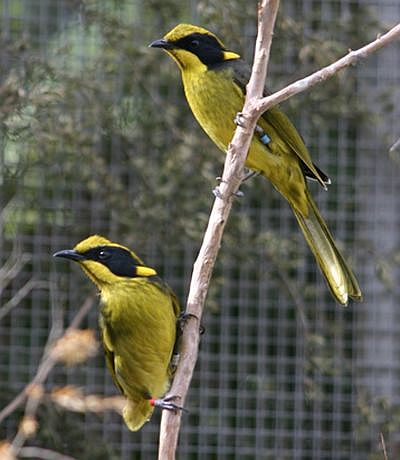
Michael spoke in relation to the current 21 Fighting Extinction priority threatened species.
Zoos Victoria threatened species research themes.
1. Improving the performance of captive breeding programs
Currently 15 species involved. Improving animal husbandry procedures to produce higher quality and more offspring. Example of current work; addressing the egg infertility in the Helmeted Honeyeater and Orange-bellied Parrot. Collaborators: Monash Uni; DELWP
2. Improving the success of translocations to the wild
Research to ensure captive bred animals have the highest chances of surviving and contribute to breeding in the wild. Example of current work; improving the survival and breeding opportunities of released Orange-bellied Parrots by overwinter ranching (collecting released birds at end of breeding season and holding them in aviaries until re-release the following season). Collaborators: Moonlit Sanctuary; DPIPWE (Tasmania).
3. Assessing the status in the wild of Zoos Victoria priority threatened species
Research to collect information regarding population distribution, status and dynamics which can be used in developing conservation strategies for the priority species. Example of current work; surveys to find the Grassland Earless Dragon, a small cryptic lizard that has not been confirmed in Victoria for almost 50 years. Collaborators: University of Tasmania; University of Melbourne; Landholders.
4. Mitigating threats in the wild to Zoos Victoria priority threatened species
Research to develop improved means of identifying and addressing threats to priority species from predators and genetic isolation. Examples of current work; trial use of Guardian Dogs for wildlife conservation e.g. Eastern Barred Bandicoot. Also investigating the use of genetic rescue to help recovery the Helmeted Honeyeater. Collaborators: Monash Uni; DELWP.
Collaboration
Michael spoke about the importance of collaboration. Zoos Victoria is currently involved in 30 research projects targeting the priority threatened species. Over 85% of these projects involve collaboration with a total of more than 20 partners.
Eastern Barred bandicoot - a tale of 3 islands
Dr Amy Coetsee, Threatened Species Biologist, Zoos Victoria
Amy spoke about Zoos Victoria’s involvement with Eastern Barred Bandicoot recovery. Although EBB’s have a high reproductive potential, are opportunistic feeders and adaptable to different habitat types their recovery has suffered due to fox predation.
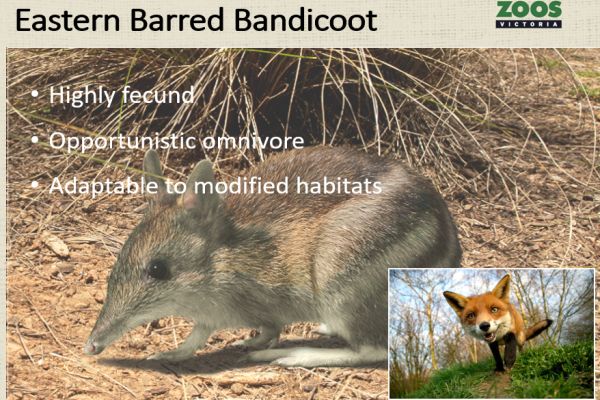
Foxes are the number one predator of Eastern Barred Bandicoots.
Fenced sites
Up until 2015 the only way to reintroduce bandicoots was to ensure they were behind fox proof fences. This has been achieved at 3 sites within their natural range (Woodlands Historic Park, Hamilton Community Parklands and Mount Rothwell). A fourth site at Tiverton in western Victoria will be completed in 2019.
Amy pointed out the use of fenced sites is not a long-term solution for recovery as it takes a lot of resources to construct and maintain fences to keep them fox proof.
Three islands
The recovery team searched for islands where no foxes were present. Three islands were identified as being potential EBB release sites (Churchill Island 52 ha, Phillip Island 10,000 ha and French Island 1800 ha). All three islands were outside the known range of EBB’s but provided a fox free environment.
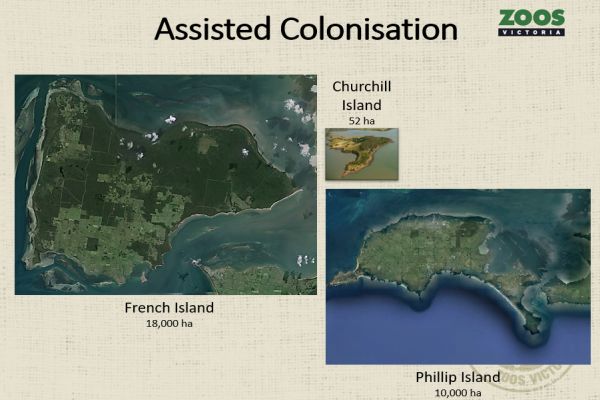
Three islands selected for Eastern Barred Bandicoot reintroduction.
Churchill Island
Churchill Island island was the first trial release site. Work was undertaken to ensure it was fox free, rabbit free and cat free prior to releases. Although being the smallest of the three islands it proved to be an extremely successful release site. Twenty Eastern Barred Bandicoots were released in 2015, the population has now stabilised around 130 bandicoots.
Studies of Bandicoots at Churchill Island found each individual bandicoot has around 487 digs per night, turning over ~13.15 kg of soil per night (Halstead 2017). This is extremely beneficial to soil health by increasing soil moisture, reducing compaction and releasing soil nutrients. To-date, studies have found no negative impacts from bandicoots being on the island.
Phillip Island
Phillip Island was considered suitable because it was fox free, although there is a known feral cat problem (approx. 1.1 cat /ha). The island has over 10,000 permanent residence who are supportive of the project.
In October 2017, 67 EBBs were released in a small area at the western end of the island. By 2018 the bandicoots have spread just over 1 km from the release site. To-date over 40 cats have been removed from the release area and there is no evidence of cat predation.
French Island
The island is fox free but known to have a feral cat population (approx. 0.68 cat/ha). A program to eradicate feral cats is due to commence in 2020. Amy spoke about the importance of community engagement. In 2007 the French Island community opposed the release of Bandicoots but with more emphasis on community engagement in recent years the majority of the community now supports the release program which is planned for Spring 2019.
Zoos Victoria, Fighting extinction - Eastern Barred Bandicoot
Research to help captive and wild animals
Dr Marissa Parrott, Reproductive Biologist - Zoos Victoria
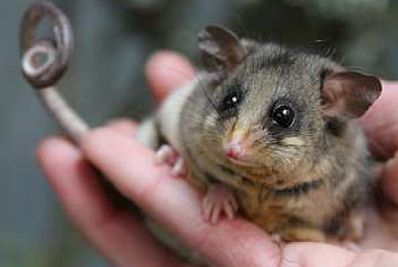
Mountain Pygmy-possum.
Part of Zoos Victoria (Healesville Sanctuary) captive breeding program.
Female mate choice
Marissa spoke about the importance of ‘female mate choice’ in determining the breeding success, quality and survival of young. Captive breeding programs often pair animals based on kinship, pedigree and management of population genetics but incorporating female mate choice provides an extra means increasing the success of captive breeding programs.
Mountain Pygmy-possum
In 2007 Zoos Victoria (Healesville Sanctuary) worked with the Mountain Pygmy Possum recovery team to undertake a captive breeding program. Over 130 possums have been raised with the first release into the wild in 2013.
Mate choice was achieved by allowing females to make a choice of scents from the dens of 5 males which were genetically suitable for breeding. Research was carried out to look at the female’s behaviour in relation to the scents. Groupings were made for breeding with the chosen male from the scent study included.
All the young possums produced were tested using DNA analysis. It was found that females produced significantly more litters and more young from their own choice of males.
Eastern Barred Bandicoot
Zoos Victoria has been working with the EBB recovery team to undertake captive breeding since 1991. All the mainland EBB’s can be traced back to the initial Melbourne Zoo breeding program. About 660 EBB’s are produced every ear and most released to the various sites identified in the recovery program.
EBB female mate choice research was undertaken in collaboration with Chris Hartnett, University of Melbourne. Some of the questions needing answers were; Do female EBBs choose mates? How does it affect litter size? How does it affect time to pregnancy? and How does it affect fitness of young?
Two males who were genetically suited were placed behind a clear screen which enabled females to interact with them. Thousands of hours of video were taken to determine the preferred males and females for mating. Results from selected mate choice found a significant difference between mating with chosen male compared with non-chosen male.
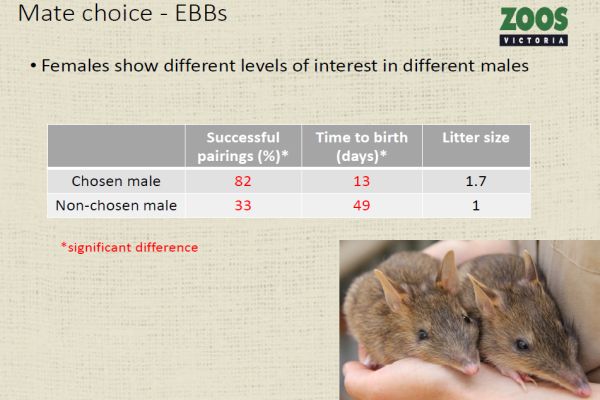
Freezing male scent
Marissa spoke about the opportunities for freezing male scents and using them in a variety of situations to determine preferred suitability prior to mating.
Tasmanian Devils
Zoos Victoria has been involved in a long-term insurance program since 2006 with the Save the Tasmanian Devil program and Zoo and Aquarium Association. Over 130 baby devils have been produced and subsequently released into disease free locations in 2013, 2015 and 2017.
Crittercam behavioural research – this involves using collars with cameras placed on Devils to study behaviours in the wild at Tarkine, Tasmania between 2015 - 2019. This research is being conducted in collaboration with Channing Hughes, University of Sydney and National Geographic. Understanding natural behaviours is important in captive management and conservation management in the wild.
Cryopreservation
Marissa spoke about the cryopreserved tissue from the now extinct Anglesea population of New Holland Mouse. Research is being conducted in conjunction with Simone Lagondar, PhD student at Monash University to see if the lost genetic diversity from this lost population can be restored to help the conservation of New Holland Mouse.
Live cells have been cultured, pluripotent stem cells induced to turn skin tissue into reproductive cells. A full genome sequence has been completed. It is hoped that in the future assisted reproductive technology can be used to bring back the lost genetic diversity and help to recover the New Holland Mouse.
Strategies to restore Lowland Leadbeater’s Possum populations
Dr Dan Harley, Threatened Species Biologist - Zoos Victoria
Dan spoke about the Leadbeater’s Possum distribution 200,00 years ago and its significantly reduced current distribution. He felt this species is already a victim of Climate Change. The species is now defined as two genetically distinctive populations; the Highlands Leadbeater’s occupying the larger area in the Central Highlands and Lowlands Leadbeater’s confined to a small outlying population to the west of Yellingbo.
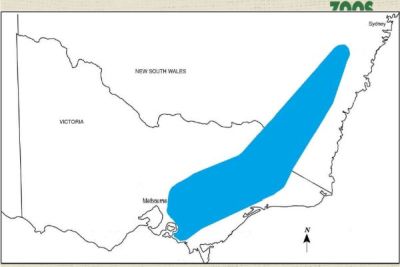
..
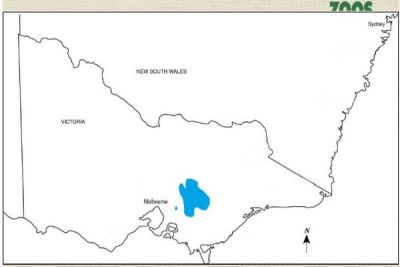
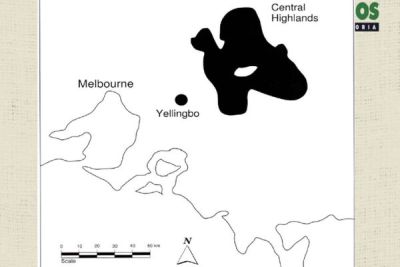
Threats
A key threatening process is clearing of floodplain forest valley floors right across eastern Victoria with only about 1% of this vegetation community intact. In remaining pockets of habitat there is ongoing sever degradation occurring.
Population in crisis
In 2017 the population was estimated at 38 Lowland Leadbeater’s Possums. In 2018 it was reduced to just 34 animals remaining in the wild.
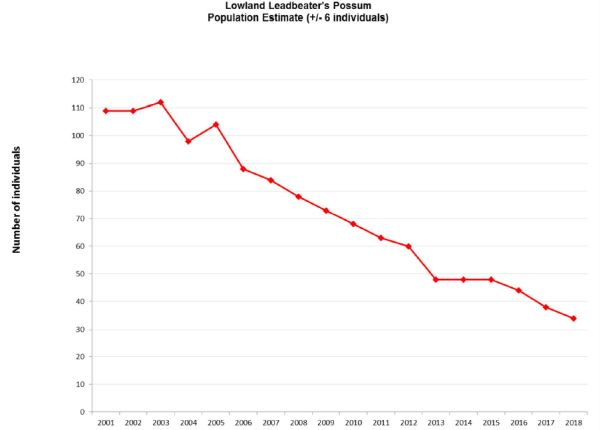
Lowland Leadbeater’s Recovery Target
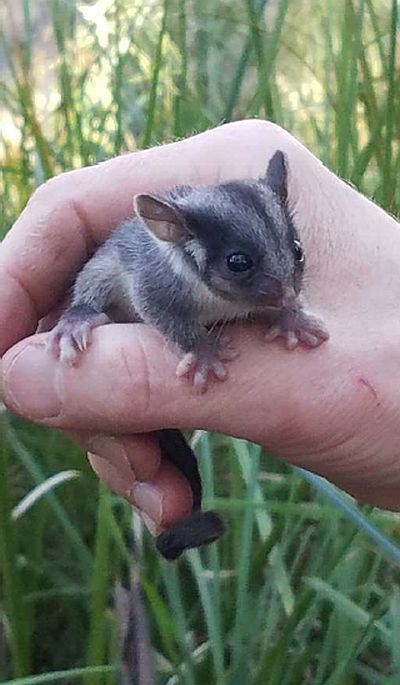
The team is aiming for 3 populations with a minimum of 350 individuals by 2030. This is based on the current habitat and capacity to restore habitat at selected sites. Research has found there needs to be about 56 ha of suitable habitat to support 100 individuals (approx. 1.8 possums/ha). Dan also mentioned that a small population of 100 individuals would require genetic management.
Habitat suitability models
Dan spoke about the search for suitable recovery sites using habitat suitability modelling, followed by extensive ground truthing to prioritise restoration and release zones.
Recovery model revised
Although the recovery model is straight forward (Restore Habitat > Release captive bred young) there have been significant challenges. Over $2 million has been invested in tree planting over the last 5 years with over 750,000 trees planted but suitable patches of habitat greater than 30 ha have not yet been created. Captive breeding efforts over the last 7 years have not produced any young.
Because time is running out for this species a radical overhaul of the recovery approach was taken to increase population size as soon as possible. The new plan involves translocating wild possums into intact habitat where they are most likely breed. A Masters project has been working to identifying the most suitable habitat, final recommendations are expected June 2019.
Working with geneticists at Monash University the team has been looking at ways to elevate genetic diversity within the Lowland Leadbeater’s population. This is a critical issue as there are indications of inbreeding occurring. The current proposal is to introduce a small number of highland Leadbeater’s to Yellingbo to alleviate breeding.
In order to protect as much habitat as possible a 5 km habitat protection fence is being built at Yellingbo to exclude the browsing impacts of wallabies and deer.
The recovery work may not yield a complete recovery of the population in the short term but hopefully it will prevent the Lowland Leadbeater’s population from becoming extinct.
Zoos Victoria, Fighting extinction - Leadbeater’s Possum
Baw Baw Frog recovery
Deon Gilbert, Threatened Species Biologist, Zoos Victoria
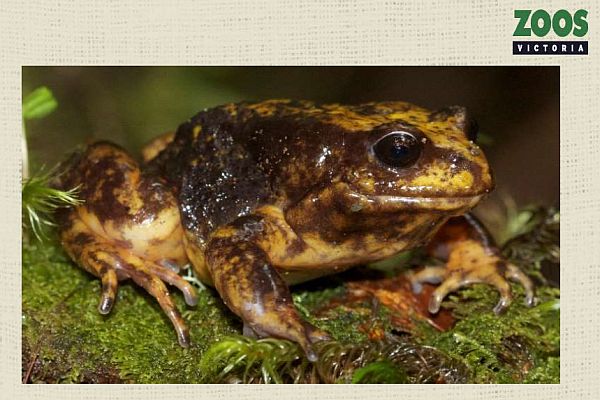
Deon’s focus is on herpetofauna (reptiles and amphibians) with nine species being worked on at present. One of the priority amphibian species is Baw Baw Frog which is endemic to the Baw Baw plateau in Victoria. The Baw Baw Frog is Critically Endangered and being managed as a captive recovery species.
The Baw Baw Frog is very difficult to find, it is only 4-5 cm in size, found in very remote rugged areas. It breeds underground and spends much of its life underground and under substrates.
Population decline
There has been a dramatic decline of Baw Baw Frogs. The main causes attributed to Chytrid fungus, Climate Change and Forestry practises.
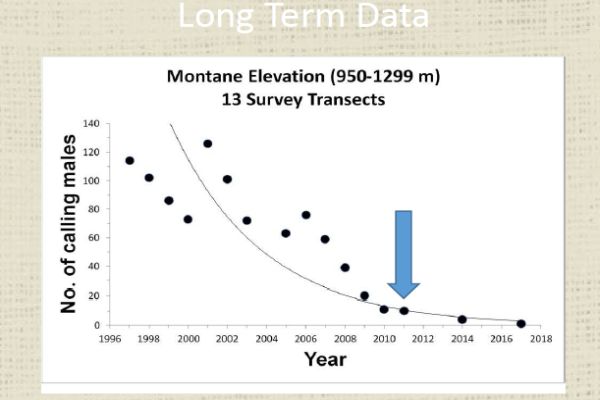
Blue arrow indicates when Zoos Victoria became involved with recovery (2011).
Hollis, G. J. (2004). Ecology and conservation biology of the Baw Baw frog Philoria frosti (Anura: Myobatrachidae): distribution, abundance, autoecology and demography. PhD thesis, Department of Zoology, University of Melbourne. https://minerva-access.unimelb.edu.au/handle/11343/39019
Captive breeding
The captive breeding program first involved collecting egg masses from the wild. There was very little known about this species biology which made it very difficult to establish a viable captive population. It took 3 seasons to understand the reasons behind metabolic stress and failed captive breeding attempts. In 2014 a new diet was introduced based on research which found the Baw Baw Frog requires elevated calcium levels in its diet. Captive rearing of collected eggs now yields good results.
The next challenge for the team was to collect male and female frogs for captive breeding. Detection dogs were used in the search for Baw Baw frogs. The first successful captive breeding was in 2016. Further research into their biology and husbandry has allowed acceleration of captive breeding.
Reintroduction
Deon spoke about the reintroduction phase of recovery now that a successful captive breeding program is underway. Trials to establish the best reintroduction methodology have been carried out with intensive monitoring to ensure future reintroductions are as effective as possible.
Conservation Detection Dogs
Chris Harnett, Threatened Species Project Officer, Zoos Victoria
Chris spoke about the innovation used by Zoos Victoria in trying new and different techniques to Fight Extinction.
The Conservation dogs squad has two divisions.
- Guardian dogs (Maremma dogs) used for protection of reintroduced species such as the Eastern Barred Bandicoot.
- Detection dogs used to assist in locating selected flora and fauna species (the dog’s sense of smell being 10,000 times more acute than humans).
The use of detection dogs achieves a high level of efficiency, being accurate and time saving.
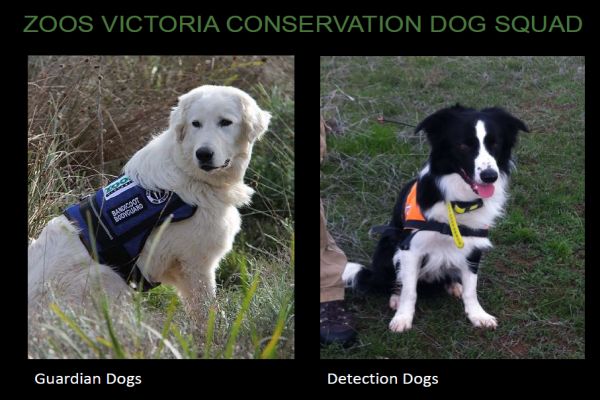
Detection dogs for Baw Baw Frog
Chris spoke about how detection dogs were used to help locate Baw Baw Frogs in the rugged and remote gullies of the Mt Baw Baw plateau.
Detection dogs are particularly helpful in detecting female frogs which don’t call and the male frogs which only call for a few weeks.
The dogs underwent specialist training to recognise the scent of Baw Baw Frogs. One the first trial 6 Baw Baw Frogs were detected.
Other detection projects
In 2018 detection dogs weretrained to locate the Critically Endangered Plains Wanderer.
Detection dogs are a particularly effective way of communicating threatened species projects to schools.
Contact: Chris Harnett
Zoos Victoria, Guardian dogs as Bandicoot Bodyguards
Community Conservation
Pete Lancaster, Community Conservation Campaigner, Zoos Victoria
The aim of the Community Conservation program is to create a community that;
- cares about wildlife
- are informed about the threats to wildlife
- can act to help wildlife
The Community Conservation program works with;
- General visitors.
- Schools
- General community
- Partners.
- Like-minded organisations
Campaigns
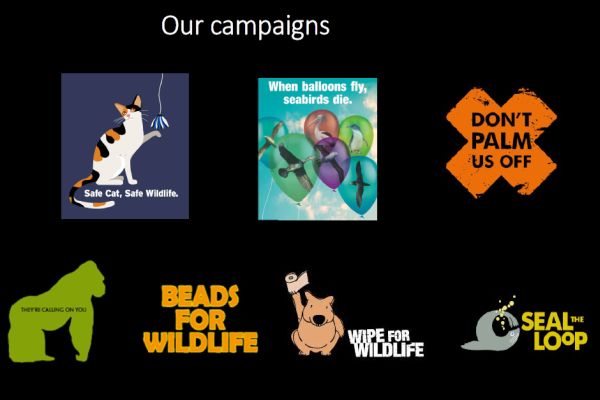
Safe Cats Safe Wildlife Campaign
This campaign was launched in 2018 in partnership with RSPCA. Chris explained the issues with cats and wildlife is very complex and emotive. There are up to 5.6 million feral cats around Australia, many populations overlink between feral and domestic roaming cats. By talking with cat owners, it is hoped to reduce the high proportion of roaming cats. Simply blaming cats and owners does not help resolve the problem as people can become defensive. The campaign is focused more on the belief that pet cats foster a love of animals and a love of wildlife.
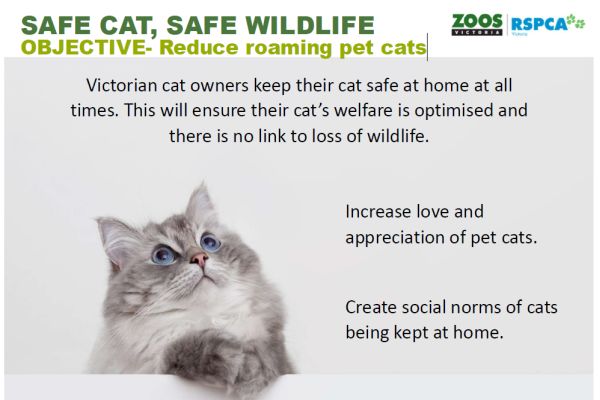
Increasing the social norm of cats being kept at home
When we see a dog roaming the street, we take notice but when a cat roams we don’t give it a second thought. The aim is to create a social norm where cats are kept at home much like dogs are.
The campaign is trying to promote a love of cats and a love of wildlife. Chris wants the community to join in with the campaign at safecat.or.au which provides cat owners with information and support to transition a roaming cat into a happy house cat.
Informed by social research
Emily McLeod, Senior Social Science Research Manager
Emily spoke about how social research is embedded into Zoos Victoria campaigns. Social research is used in planning the development phase as well as the implementation phase of a campaign.
- Define goals & measurable objectives.
- Target audience.
- Research into motivation behind target behavior, develop/test message, identity channels to deliver message.
- Indicators of success.
- Track indicators of success during implementation.
- Evaluate impact of intervention – goals achieved?
Social research in the Safe Cats Safe Wildlife campaign
Emily used the Safe Cats Safe Wildlife campaign as an example. Focus groups for the Safe Cats Safe Wildlife campaign commenced in 2016. One of the key messages which came out was that cat owners feel persecuted. It is therefore necessary to ensure any program engages cat owners and not put them on the back foot. A survey of factors which predict cat containment was undertaken. 6,808 people were conducted across Australia (79% were cat owners).
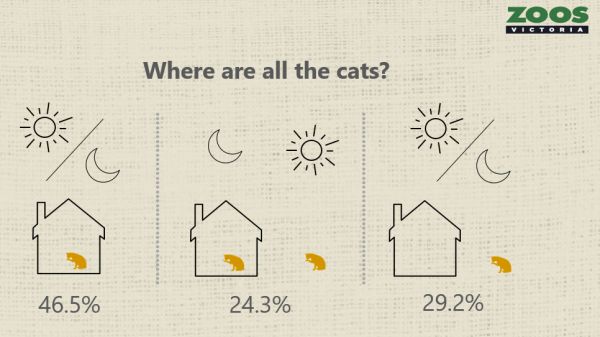
Key factors in determining where people keep their cats.
Emily spoke about the theory of Planned Behaviour and the need to understand which of the following 3 variables to target as these can vary depending on the behaviour.
- Attitudes towards the behaviour – positive or negative
- Social norms – what people think of us
- Perceived behaviour control – how we perceive how easy or hard it is to perform the behaviour.
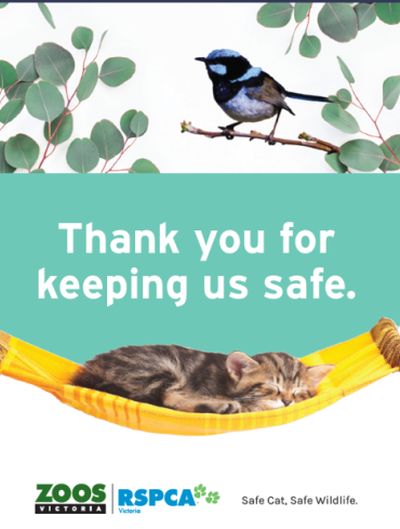
Further surveys based on theory of Planned Behaviour found the most important predictor as to whether a person would keep their cat inside was based on how confident they were to provide everything needed to ensure their cat was happy inside.
Results from surveys were built into development of the Safe Cats Safe Wildlife (SCSW) campaign. A key part of the campaign is the using positive messaging to ensure people are engaged in the process.
Tracking indicators of success (target indicator)
15,970 people signed up (40,000)
27 Victorian local councils (20)
50 vet clinics (40)
on-going% increase in positive attitudes towards cat containment (10%)
Follow up surveys of Zoo Visitors and SCSW community members have been conducted at 6 months intervals to determine the campaigns’ impacts. Emily discussed some of the positive trends where there has been around a 10% increase in people keeping their cat indoors all the time.
Safe Cats Safe Wildlife web site
International Programs
Chris Banks, International Programs Manager, Zoos Victoria
Zoos Victoria’s international conservation commitment for 2019 - 2024
Chis provided an introductory overview of Zoos Victoria’s International program;
- Zoos Victoria has had international involvement with wildlife conservation in other countries. since 1992.
- There is a Global animal focus; telling global conservation stories.
- Current international relationships managed via agreements expire 30 June 2019.
- New partnerships will align with the new Wildlife Conservation Master Plan 2 (CMP2) which commences on 1 July 2019 (2019-2024).
The new Wildlife Conservation Master Plan 2 retains and expands major features of international conservation. The main 3 areas of support are;
- Partnerships
- Sister zoos
- International grants.
Chris spoke about the alignment of international partnerships with regions and Victoria’s three Zoos.
- Werribee Open Range Zoo aligned with Sub-Sahara Africa (emphasis on grasslands and savannah species).
- Melbourne Zoo aligned with South-east Asia.
- Healesville Sanctuary aligned with Oceania (broadening approach as previously Healesville mainly dealt with Australian native species).
International conservation can be used to increase influence with government and communities in Zoos Victoria partner countries.
A feature of the new Zoos Victoria International Conservation Strategy is aligning Sister Zoos with Conservation Partnerships.
Sister Zoos
The concept of Sister Zoos gained prominence in 2005 when the World Association for Zoos and Aquariums recommended partnerships between well-resourced, leading zoos and under-resourced but well-intentioned zoos. Sister Zoo partnerships provide opportunities to develop skills and knowledge across all facets of zoo operations with benefits to both parties. It also places Zoos Victoria’s conservation model in an international context which can be used to enhance outcomes for wildlife and people in other counties.
Chris spoke about the process involved in arriving at the partnerships;
- Identifying appropriate species (mammals, birds and reptiles) from IUNC Critically Endangered and Endangered species in Oceania, SE Asia and Sub-Saharan Africa.
- Identifying field conservation programs and species relevant to Zoos Victoria.
Implementing partnerships
Chris explained a 3-tier approach:
- Extend the three current partnerships.
- Develop three new partnerships.
- Continue with the Conservation grants program.
South-east Asia and Melbourne Zoo partnership
The focus species is the Philippine Crocodile. The Sister Zoos is Manila Zoo, a small zoo with huge potential for conservation and education. The Philippine Crocodile is the most endangered species of crocodile in the world with only two populations remaining.
South-east Asia and Melbourne Zoo, tier 2 partnership
This partnership is with Flora & Fauna Vietnam in Pu Mat National Park to support Northern White-cheeked Gibbons (extinct in several Asian countries, numbers in Vietnam less than 1000) and Asian Elephants.
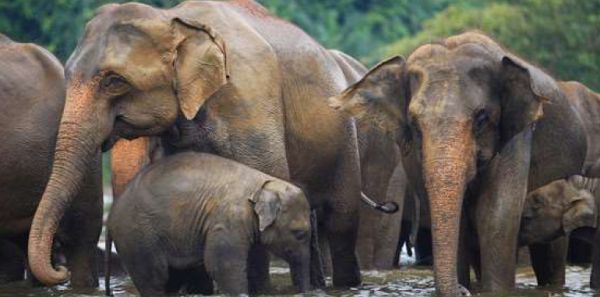
Sub-Saharan Africa and Werribee Open Range Zoo
This tier 1. conservation partnership focuses on the White Rhino through the Rhino Fund Uganda. The Sister zoo is the Uganda Wildlife Education Centre . The White Rhino is under significant pressure with the only remaining wild White Rhinos at the 7000 ha Rhino Fund sanctuary. This partnership has good community relationships delivering outcomes for wildlife and people.
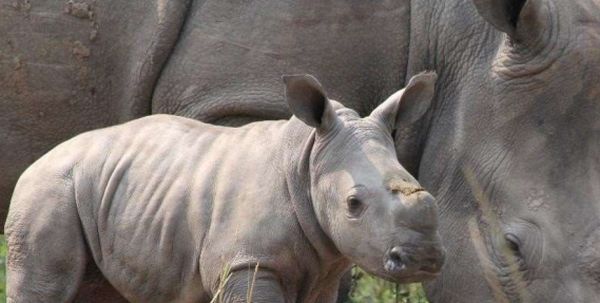
Uganda Wildlife Education Centre at Entebbe will focus on developing a conservation strategy for the whole of Uganda. There is significant potential for Zoos Victoria to contribute through its education and conservation services.
Sub-Saharan Africa and Werribee Open Range Zoo tier two project
This project involves conservation of Eastern Gorillas, focusing on the Mountain Gorillas through the Dian Fossey Gorilla Fund in Rwanda.
Oceania and Healesville Sanctuary
Focusing on the Tree Kangaroo in Papua New Guinea with a very successful Sister Zoo relationship with the Port Moresby Nature Park. The program involves ‘conservation coffee’ with economic, education and health benefits to remote communities. The wildlife benefit comes from farmers joining the ‘conservation coffee’ program and committing land to a wildlife conservation area.
Oceania and Healesville Sanctuary tier 2 partnership
Conservation partnership with Ornithological Society of Polynesia for Polynesian Birds on Marquesas Islands: 4 flycatchers, 1 kingfisher and 3 ground-doves/pigeons. These species are directly impacted upon by cats and rats.
Tier 3: International conservation grants
As an example, Chris spoke about Protecting Snow Leopards & other wildlife in Mongolia through the Nomadic Guardians Foundation. The aim is to reduce retaliatory killing of Snow Leopards and other predators through placement of Mongolian Bankhar Livestock Guardian Dogs with remote farming communities in southern
Mongolia.
Zoos Victoria, International programs and grants
List of speakers and topics
- Introduction to a Zoo based conservation organisation, Craig Whiteford, General Manager, Threatened species
- Overview of Zoos Victoria threatened species research activities, Dr Michael Magrath, Senior Research Manager
- Eastern Barred bandicoot - a tale of 3 islands, Dr Amy Coetsee, Threatened Species Biologist, Zoos Victoria
- Research to help captive and wild animals, Dr Marissa Parrott, Reproductive Biologist - Zoos Victoria
- Strategies to restore Lowland Leadbeater’s Possum populations, Dr Dan Harley, Threatened Species Biologist - Zoos Victoria
- Baw Baw Frog recovery, Deon Gilbert, Threatened Species Biologist, Zoos Victoria
- Conservation Detection Dogs, Chris Harnett, Threatened Species Project Officer, Zoos Victoria
- Community Conservation, Pete Lancaster, Community Conservation Campaigner, Zoos Victoria
- Informed by social research, Emily McLeod, Senior Social Science Research Manager
- International Programs, Chris Banks, International Programs Manager, Zoos Victoria
View notes from previous SWIFFT Seminars


